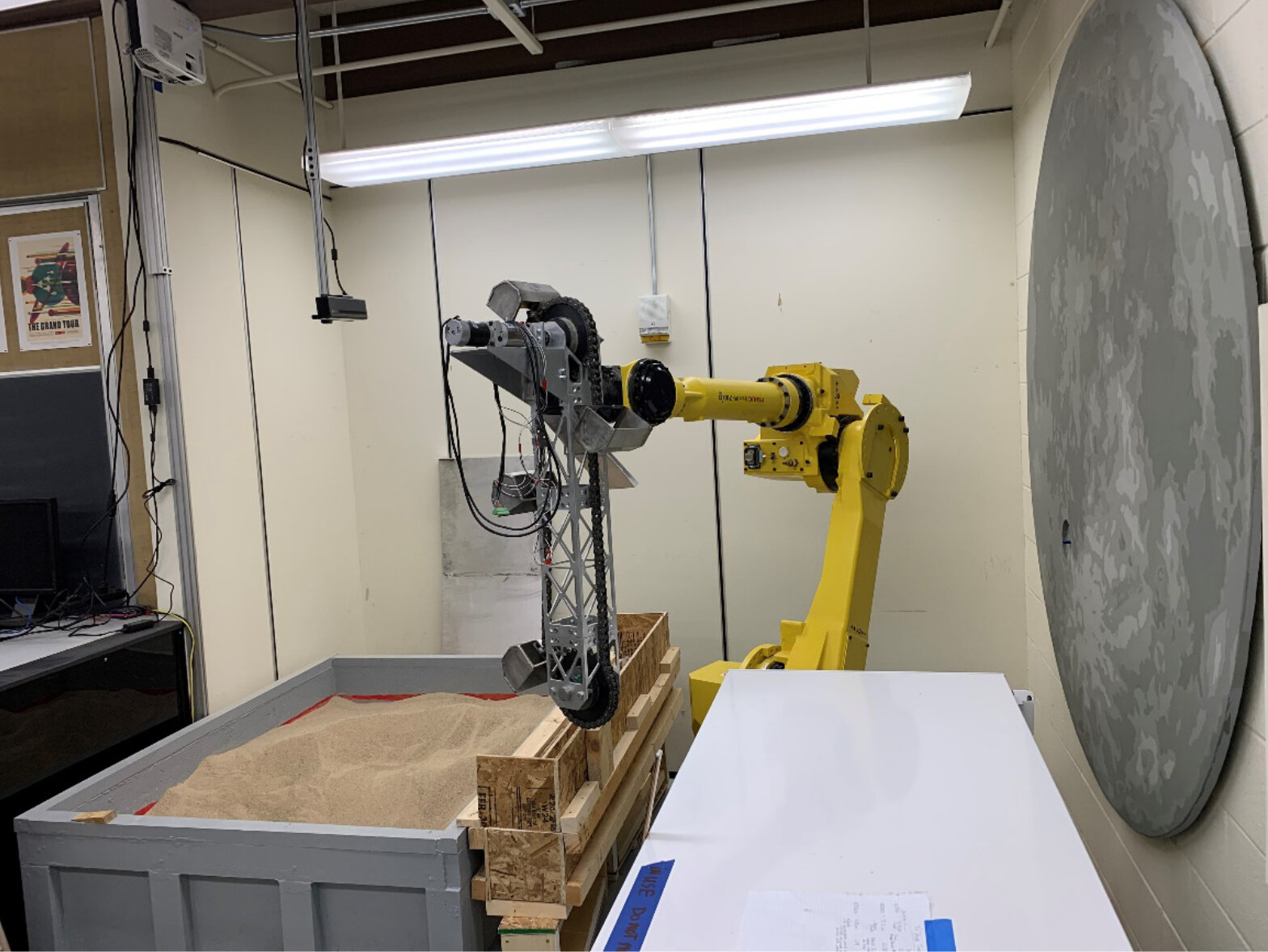Contact
Dr. Paul van Susante
Assistant Professor Mechanical Engineering
Michigan Technological University
lab website: https://www.huskyworks.space/
lab facilities: https://www.huskyworks.space/facilities
Lab overview
» Download full 2021 lab facility description
Highlights from the facility description:
The Planetary Surface Technology Development Laboratory (PSTDL) is a new research facility designed and led by Dr. van Susante at Michigan Technological University (MTU) and consists of several spaces with various equipment and supporting labs. The goal of the PSTDL is to prototype, build, test and quickly increase the TRL of technology being developed for lunar and mars missions.
The central piece of the PSTDL is a custom built rectangular 60" x 60" x 80" Dusty Thermal Vacuum chamber (DTVAC) with a usable volume inside the thermal shroud of 50x50x70 inches, that can be cooled as low as -196˚C and heated as high as 150˚C, reach a vacuum of 10-6 Torr (10-4 Torr with simulant) and contain a box with up to 3000 lbs of Regolith simulant.
16 total viewports and feedthroughs are available for configuration:
2 - ISO-LF DN160 (NW160)
4 - ISO-LF DN63 (NW63)
4 - KF/QF40-100-LF (NW40)
2 - KF/QF25-100-LF (NW25)
4 - KF/QF16-100-LF (NW16)
Outside the lab, the dedicated 3,125 Gallon Bulk LN2 tank supplies the liquid nitrogen to the DTVAC thermal shroud and plate and allows for long duration testing at cryo temperatures. The chamber has two 10" viewports, 16 smaller ports for power and data feedthroughs and for future use, including a 20" diameter expansion port if vertical expansion of the vacuum space would be required (this would require major modifications though).
The DTVAC facility is on schedule to be operational in the first week of 2021. The chamber will have a regolith bin that can hold up to 3000 lbs of simulant and can be rolled into and out of the chamber. There will be two regolith bins so one can be prepared while the other is being tested. Water, compressed air and any power need can be met in the lab and fed into the chamber as needed.
The other part of the PSTDL is a new +1100 sq ft lab that contains a 6 axis Fanuc m-710iC/50 industrial robotic arm with a reach of 2m and a 50 kg load capacity. In the robot’s reach is a 14 cubic ft chest freezer in which lunar simulant can be mixed with water and frozen for excavation and measurement testing of end-effectors/payloads for operation on the lunar surface (or on Mars or other planetary surfaces). An augmented reality sandbox system is installed to function together with the excavation sandbox filled with regular play sand and the robotic arm.
Another major piece of the lab is a 14ft x 6ft x 1ft regolith simulant filled sandbox that is enclosed, kept under slight negative pressure for dust control as well as an ‘airlock’ to mitigate dust, has an overhead rail system that has as a gravity off-loading system (up to 200 lbs total load) installed. Slopes up to 45˚ are possible to be built into the box.





































